
A vineyard is a plantation of grape-bearing vines, grown mainly for winemaking, but also raisins, table grapes and non-alcoholic grape juice. The science, practice and study of vineyard production is known as viticulture.
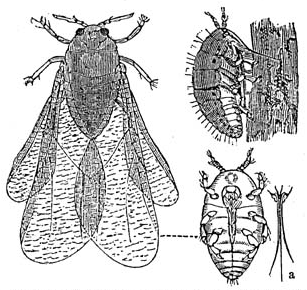
Grape phylloxera ; originally described in France as Phylloxera vastatrix; equated to the previously described Daktulosphaera vitifoliae, Phylloxera vitifoliae; commonly just called phylloxera is a pest of commercial grapevines worldwide, originally native to eastern North America.

Beaujolais is a French Appellation d'Origine Contrôlée (AOC) wine generally made of the Gamay grape which has a thin skin and is low in tannins. Like most AOC wines they are not labeled varietally. Whites from the region, which make up only 1% of its production, are made mostly with Chardonnay grapes though Aligoté is also permitted until 2024. Beaujolais tends to be a very light-bodied red wine, with relatively high amounts of acidity. In some vintages, Beaujolais produces more wine than the Burgundy wine regions of Chablis, Côte d'Or, Côte Chalonnaise and Mâconnais put together.

Mosel is one of 13 German wine regions (Weinbaugebiete) for quality wines , and takes its name from the Mosel River. Before 1 August 2007 the region was called Mosel-Saar-Ruwer, but changed to a name that was considered more consumer-friendly. The wine region is Germany's third largest in terms of production but some consider it the leading region in terms of international prestige. The region covers the valleys of the rivers Mosel, Saar, and Ruwer from near the mouth of the Mosel at Koblenz and upstream to the vicinity of Trier in the federal state of Rhineland-Palatinate. The area is known for the steep slopes of the region's vineyards overlooking the river. At 65° degrees incline, the steepest recorded vineyard in the world is the Calmont vineyard located on the Mosel and belonging to the village of Bremm, and therefore referred to as Bremmer Calmont. The Mosel is mainly famous for its wines made from the Riesling grape, but Elbling and Müller-Thurgau also contribute to the production, among others. In the past two decades red wine production, especially from the Spätburgunder, has increased in the Mosel and throughout the German vignoble and has become of increasing interest to the international wine community. Because of the northerly location of the Mosel, the Riesling wines are often light, tending to lower alcohol, crisp and high in acidity, and often exhibit "flowery" rather than or in addition to "fruity" aromas. Its most common vineyard soil is derived in the main from various kinds of slate deposits, which tend to give the wines a transparent, mineralic aspect, that often exhibit great depth of flavor. In the current era of climate change much work has been done to improve and gain acceptance for completely dry ("Trocken") Rieslings in this region, so that most of the more famous makers have found acceptance for such wines, particularly in Europe.
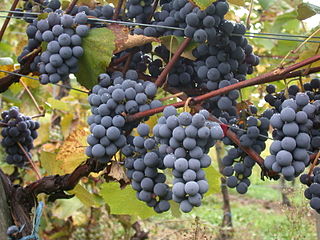
Gamay is a purple-colored grape variety used to make red wines, most notably grown in Beaujolais and in the Loire Valley around Tours. Its full name is Gamay Noir à Jus Blanc. It is a very old cultivar, mentioned as long ago as the 15th century. It has been often cultivated because it makes for abundant production; however, it can produce wines of distinction when planted on acidic soils, which help to soften the grape's naturally high acidity.

Torbreck is an Australian winery in the Barossa Valley, founded by David Powell in 1994. The winery was named one of the World's Top 100 Wine Estates by Robert Parker. The winery is named after a forest in Scotland where Powell worked as a lumberjack. The wines are made in a style emulating those of the Rhone Valley and are made from various grapes including red grapes Shiraz, Grenache and Mataro as well as white grapes Viognier, Roussanne and Marsanne.
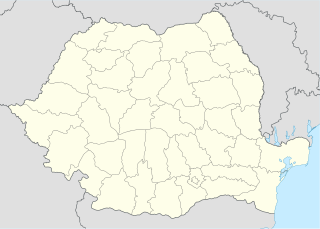
Cotnari is a village and the center of the eponymous commune in Iași County, Romania, in the historical region of Moldavia. It is located north-west of Iași and south of Hârlău, in a major wine-producing region of Romania, and is famous for the wine variety known as Grasă de Cotnari. Cârjoaia, the forest of Dumbrava Roșie, and other sites in Cotnari are regional tourist spots.

The earliest archaeological evidence of wine produced from grapes has been found at sites in Georgia, China, }} BC), Lebanon, Iran, Greece, and Sicily. The oldest extant evidence of wine production has been found in Armenia.

Palatinate is a German wine-growing region (Weinbaugebiet) in the area of Bad Dürkheim, Neustadt an der Weinstraße, and Landau in Rhineland-Palatinate. Before 1993, it was known as Rhine Palatinate (Rheinpfalz). With 23,461 hectares under cultivation in 2008, the region is the second largest wine region in Germany after Rheinhessen. There are about 6,800 vintners producing around 6.5 million hectolitres of wine annually.

Tamási is a town in Tolna County, Hungary.

Priorat is a Catalan Denominació d'Origen Qualificada (DOQ) for wines produced in the Priorat county, in the province of Tarragona, in the southwest of Catalonia.

Morales del Vino is a municipality located in the province of Zamora, Castile and León, Spain. According to the 2007 census (INE), the municipality has a population of 2,345 inhabitants.

Laneia is a village at the foot of Mount Troodos on the main Limassol to Troodos road, about 26 km from Limassol in the country of Cyprus. Lania is one of the country's main wine producing villages.
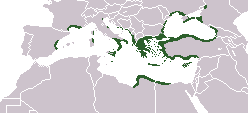
The influence of wine in ancient Greece helped ancient Greece trade with neighboring countries and regions. Many mannerisms and cultural aspects were associated with wine. It led to great change in Ancient Greece as well.
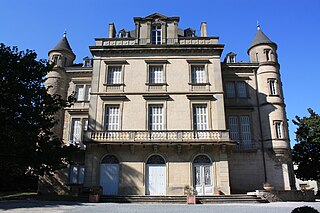
Villegly is a commune in the Aude department in southern France.

Ville-sur-Jarnioux is a small village and commune in eastern France. It is situated in the hills of the Beaujolais wine-growing countryside in the Rhône department of the Auvergne-Rhône-Alpes region.

Grape festivals are celebrated as a tradition in various parts of the world. Many double as harvest festivals and celebrate wine making and other foods and beverages made from grapes.

The use of vine training systems in viticulture is aimed primarily to assist in canopy management with finding the balance in enough foliage to facilitate photosynthesis without excessive shading that could impede grape ripening or promote grape diseases. Additional benefits of utilizing particular training systems could be to control potential yields and to facilitate mechanization of certain vineyard tasks such as pruning, irrigation, applying pesticide or fertilizing sprays as well as harvesting the grapes.
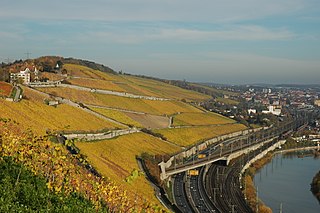
Würzburger Stein is a vineyard in the German wine region of Franconia that has been producing a style of wine, known as Steinwein since at least the 8th century. Located on a hill overlooking the Main river outside the city of Würzburg, the vineyard is responsible for what may have been the oldest wine ever tasted. In addition to being one of Germany's oldest winemaking sites, at 85 hectares, the vineyard is also one of Germany's largest individual plots.

The Lower Moselle is the name given to the lower reaches of the Moselle river - just under 100 kilometres long - in Germany between Pünderich and the Moselle's confluence with the Rhine at Koblenz. The Lower Moselle landscape differs from that of the Middle and Upper Moselle, much of it forming a narrower valley with high and steep sides in places. On the cut banks of the river that are oriented towards the south and west, vineyards are managed, often on the tiniest, terraced strips of land on steep hillslopes.



















